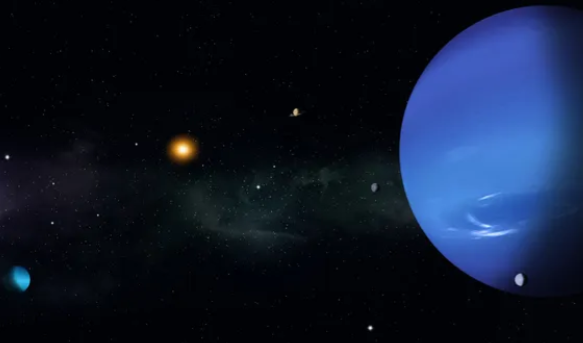Three new moons around Uranus and Neptune
Three tiny moons, one orbiting Uranus and two circling Neptune, have been recently confirmed by the International Astronomical Union (IAU), bringing the total number of known moons to 28 around Uranus and 16 around Neptune.
Tiny New Addition to Uranus
The new Uranian moon, designated S/2023 U1 for now, is approximately 5 miles (8 kilometers) in diameter, making it one of the smallest moons in the solar system. It orbits Uranus once every 680 days. Like Uranus’ other 27 moons, S/2023 U1 will eventually be given an official name from Shakespearean characters.
Two More Satellites for Neptune
The two newly confirmed Neptunian moons have been labeled S/2002 N5 and S/2021 N1. With diameters of about 14.3 miles (23 km) and 8.7 miles (14 km) respectively, they bring Neptune’s total satellites to 16. S/2002 N5 takes nearly 27 years to complete one orbit, while S/2021 N1 orbits Neptune every 9 years. Following convention, they will receive names related to Greek mythology’s Nereids down the line.
Challenges Spotting Distant Tiny Moons
Catching sight of such small, distant moons is highly difficult with Earth-based telescopes. As astronomer Scott Sheppard, who was involved in all three discoveries, explains: “The three newly discovered moons are the faintest ever found around these two ice giant planets using ground-based telescopes.” Special image processing was needed to reveal them. Their tiny size and great distance makes their movements almost impossible to detect compared to background stars and galaxies.
New Technique Brings Hidden Moons into View
The solution came through taking multiple long exposure images and stacking them together. This had the effect of blurring out stationary background objects while making objects in motion, like orbiting moons, stand out more obviously. Sheppard stated that this allowed them to “bring the moons out from behind the background noise.”
More Moons Waiting in the Outer Solar System
With over 60 new moons confirmed around Jupiter and Saturn since last year, and now three more around Uranus and Neptune, these discoveries showcase the power of new techniques and telescopes to unveil previously hidden objects even in the outer solar system. Many more diminutive, distant natural satellites likely remain undiscovered and await their official cosmic baptism by the IAU.
Category: Science & Technology Current Affairs







